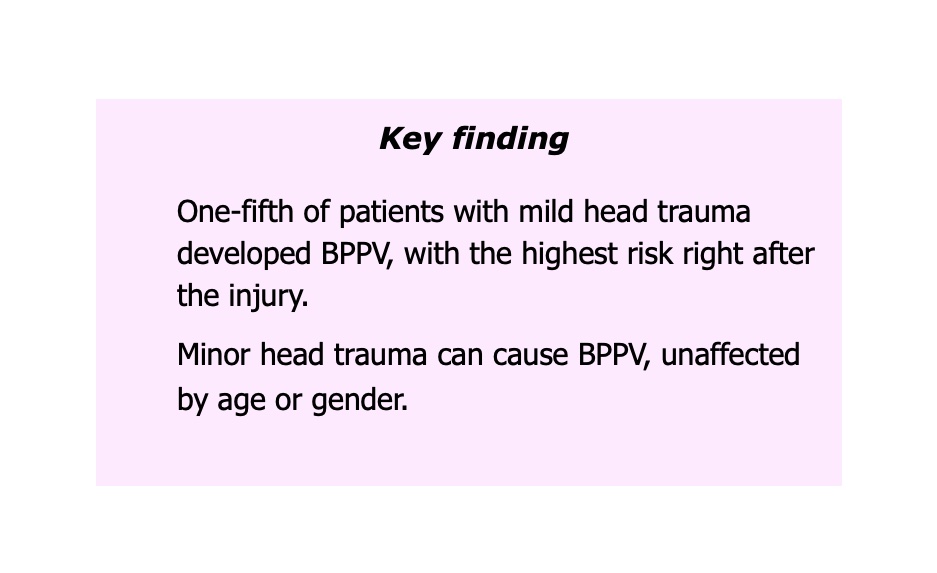Title: The Risk of Benign Paroxysmal Positional Vertigo After Head Trauma
Authors: Helene Andersson, MS ; Greg Eigner Jablonski, MD, PhD; Stein Helge Glad Nordahl, MD, PhD; Karl Nordfalk, MD, PhD; Eirik Helseth, MD, PhD; Camilla Martens, MD, PhD ; Kjetil Røysland PhD, Frederik Kragerud Goplen, MD, PhD
Source: Laryngoscope, 132:443–448, 2022
The study noted that there is not an internationally accepted standard criteria for traumatic BPPV (t-BPPV) at present. The cut-off time between trauma and development of symptoms used in literature varies anywhere from days to three months.
Significant BPPV was found in cases with minimal head traumas, showing that even relatively minor injuries can result in BPPV. The risk of t-BPPV did not vary with age or gender. Additionally, the study found a different distribution of subtypes of BPPV compared to the reported distribution within cases of i-BPPV (there were more bilateral, lateral and anterior canal cases), highlighting the need to conduct the supine roll test on dizzy head injury patients. Due to the high prevalence of BPPV after head trauma, the study noted that BPPV should first be investigated before denoting symptoms to a concussion.
To conclude, the study proposed that in head trauma cases where development of BPPV occurs within two weeks of the trauma, the trauma is the cause. Consequently, head trauma patients should be educated about the possibility of developing BPPV, and protocols should be developed specifically to diagnose and treat BPPV after minimal to moderate head trauma.

